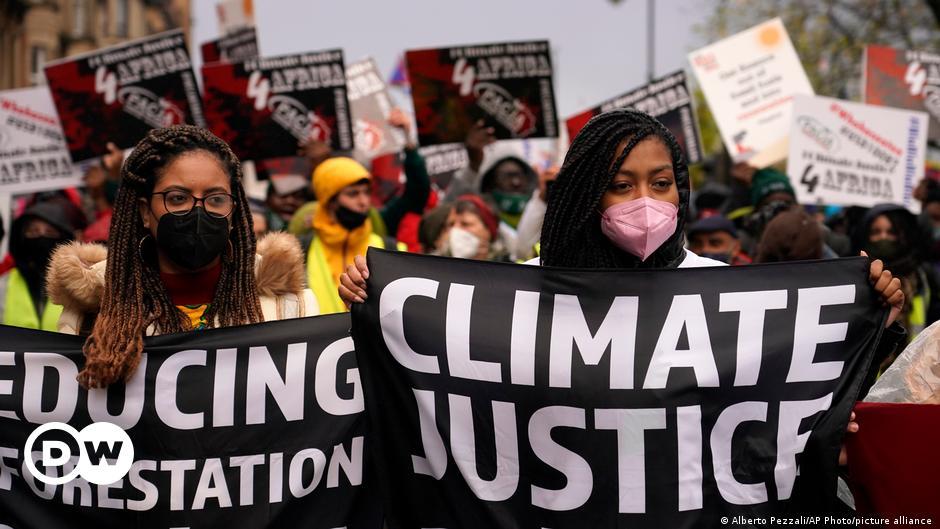The one thing the climate summit in Glasgow, Scotland, made clear is that human society remains in business-as-usual mode, with no meaningful curb on fossil fuel use. The soft pledges made at COP26 might have been acceptable decades ago, but not now.
The world needs to shift into climate emergency mode, and it needs to happen this year. To use a science metaphor, what we need is a phase transition — as when a saturated liquid crystallizes — in the social norms that translate into collective decisions. Incrementalism can no longer save us.
That so little emerged from COP26 despite the shocking climate events of this past summer — the heat dome in the Pacific Northwest, people drowning to death in basement apartments in New York, emerging climate famine in Madagascar, to name just a few — should be a catalyst for action by the global climate movement and the public at large.
Opinion
Op-Ed: Expect hotter and deadlier heat waves that will make this summer seem cool
To say that 120 degrees in Canada is a ‘once in 1,000 years’ event is nonsense at this point, because the baseline has shifted so radically.
AdvertisementThe results of COP26 was really no surprise, given that the single biggest delegation present was the fossil fuel industry itself. In the three decades of U.N. climate meetings, beginning with the Earth Summit in 1992, the buildup of fossil fuel carbon dioxide in the atmosphere has roughly doubled and our peril has vastly increased. Yet no plan has emerged to stop the terrifying and irreversible destruction of Earth’s life support systems.
Clearly, neither science, nor intensifying climate disaster, nor the many remarkably polite actions of activists have thus far moved world leaders — not even on the point of ending fossil fuel subsidies. Given the stakes, what do we do as citizens?

The magnitude of this failure should be seen in the context of the speed, intensity and irreversibility of climate and ecological breakdown. For me, as a climate scientist, watching COP26 conclude without commitments to end carbon dioxide emissions was like watching a group of firefighters standing around squabbling in front of burning houses with children inside. Turn on the hoses! Save the children trapped inside! The houses in question? They are yours and mine.
First, consider the speed of the climate unraveling. The Intergovernmental Panel on Climate Change tells us that it is likely still physically possible (if not politically possible) to keep global heating under 1.5 degrees Celsius compared with preindustrial levels.
However, in each second ticking by, humanity dumps over 1,000 tonnes of carbon dioxide into the atmosphere, where it accumulates. This amounts to over 40 billion tonnes per year. According to IPCC estimates, humanity now has about 200 billion tonnes of additional “carbon budget” left for a 66% chance of staying below 1.5 degrees Celsius. At current rates of human emissions, we therefore have five years before crossing this threshold is likely locked in.
Now, consider the intensity of the change we’re witnessing. The public has been led to believe that 1.5 degree Celsius of global heating is a “safe” level, but it is not. Many regions in the global south are already being hammered by climate and ecological breakdown. Climate scientists were caught off guard by the catastrophes of this summer; with current global warming at about 1.2 degrees Celsius, things are already quite a bit worse than we expected.
Politics
World leaders reach agreement during climate summit
United Nations summit goes into overtime before ending with an agreement in fight against climate change.
Finally, there’s the issue of irreversibility. Unfortunately, where climate is concerned, what’s done is done. Global heating cannot be reversed on human time scales; it can only be halted. That carbon building up in our atmosphere now? Much of it will still be there in the year 3000. Dozens of irreversible Earth system tipping points, such as the loss of the Amazon rainforest and a shift in global ocean circulations, loom darkly somewhere in the near future.
One good thing to come out of COP26 was the decision to revisit emissions reductions again in a year’s time (as opposed to five years in the Paris agreement). This is the year for society to finally have its phase transition into emergency mode. Politely asking the ruling class to stop destroying the Earth hasn’t worked. The movement must now bring in even more people, diversify its tactics, and force world leaders to take urgent action and rapidly ramp down the fossil fuel industry.
Unless COP26’s failure is recognized as failure, there is no way to learn from it. Allowing global leaders to feel that what happened in Glasgow was acceptable — and spinning it as some sort of success — would be a disastrous mistake. It would give them further license to pander to the fossil fuel industry and fail again next year. At this late stage, until society transitions to emergency mode we will face ever greater consequences.
Peter Kalmus is a climate scientist and the author of “Being the Change: Live Well and Spark a Climate Revolution.” @ClimateHuman









